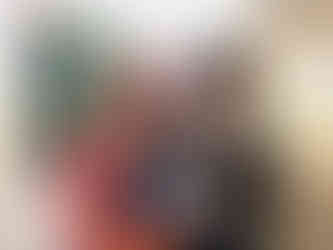Hekate: exploring liminality
- Evangelia Papoutsaki
- Dec 6, 2024
- 3 min read
An invitation by Leila Lees to speak to her new poetry collection at her book launch at the Waiheke Community Art Gallery took me through her intimate journey with Hekate and allowed me to rediscover this ancestral Greek Goddess and all that she stands for.
“I cross through the liminal Spaces. Hekate is in front of and behind” This is how Leila opens up her collection
Associated with the moon, night, and the mysteries of the universe, this Greek Goddess of magic, witchcraft, and crossroads embodies the essence of liminality. She occupies the threshold spaces between day and night, life and death, and reality and the unknown.
As a goddess of transitions, Hecate navigates the ambiguous and the uncertain, rendering her a powerful symbol of female liminality. In this context, female liminality refers to the state of being between defined roles, identities, or stages of life, where women often find themselves marginalized or excluded. Hecate's occupation of these liminal spaces serves as a potent reminder of the transformative power and agency that lies within the ambiguous and the unknown, offering a powerful feminist archetype for navigating the complexities of female experience.
Growing up in Greece, I studied a lot of ancient Greek history, including the pantheon of gods and goddesses. They were a big part of my school curriculum but daily conversations. Greeks are not separated from their history, they live and breath in it. However, Hekate was not really mentioned among the familiar Greek gods and goddesses I learned about.
If someone did mention Hekate, I don't remember it, and I wonder why. Many goddesses, not just in Greece but around the world, were pushed aside when patriarchy took over. How many know Lilith was the first wife of Adam? Goddesses who occupied liminal (read dangerous) spaces were not celebrated like others. We talked about Aphrodite's beauty, Hera's jealousy of Zeus, and Athena's logic, but Hekate was missing from those stories.
What is it with Gods and men alike that scares them with goddesses and women who occupy liminal spaces? I think it’s their ability to embrace and hold shifting, fluid and darker spaces with confidence and openness. The liminal is not fixed, it’s introspective but also invitational. Women, I believe, are better at engaging with the liminal, the crossroads, the threshold as Leila’s collection demonstrates:
“A threshold. Is neither inside or outside. The crossroads are the junction of roads, yet belong to none of them. The liminal place offers a variation of options with no reassuring certainty.” Leila tells us in “this liminal place” poem
“Perhaps It is Hekate that unravels uncertainty. Reminding me That the souls journey traverses through fragmentary glimpses, fluctuating and merging definitions of form and identity.” Leila reminds in her Threshold poem
Leila brought to mind the work of Deborah Tull Eden, “Luminous Darkness”. I found Leila’s work similarly refreshing in its “darkness”, an antidote to the tyranny of our sunshining culture and its focus on the external world with its constant seeking of externally driven pleasure and instant satisfaction ignoring the darker-quieter-slower side of life—night, dawn, dusk, and underground life where roots/life grow.
“Before I know where I am, I am in darkness. …Darkness that is complete and timeless. Darkness that renders stillness to the visitor that I am. Darkness that rasps up against the memory of creation.” Leila notes in The sleeping soul cannot hear the messenger poem
This also made me think of the Maori people's three baskets of knowledge, one of which is the basket of darkness. According to the Maori tradition, there are three baskets of knowledge: te kete tuauri (sacred knowledge/light), te kete tuatea (ancestral knowledge/darkness) and te kete aronui (knowledge in front of you/pursuit). Leila’s contemplative narrative poetry contributes to these baskets but more so to second one as she engages so gracefully on the spiritual, ecological, psychological, and interpersonal implications of our personal and also collective bias toward darkness.
Leila and Hekate invite us to reclaim the quiet power of that liminality, to pause and reflect, to breath in deeply and connect with ourselves, those sentient beings (the more than human) around us and the elements of nature (fire, water, air, mountains, all themes present in her collection) that form part of our life’s ecology that often go unnoticed or taken for granted and learn how to hold conversations with them and ourselves.
And like in her first poem titled Hekati, Leila closes with a poem also titled Hekati with another invocation to her companion Goddess, completing the cycle in her journey with her:
“Hecate is here, in the places between the roots she weaves a remembering of the space between the threads”






















Comments